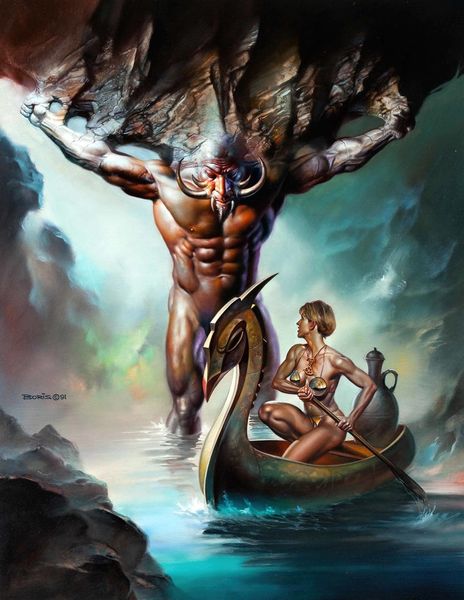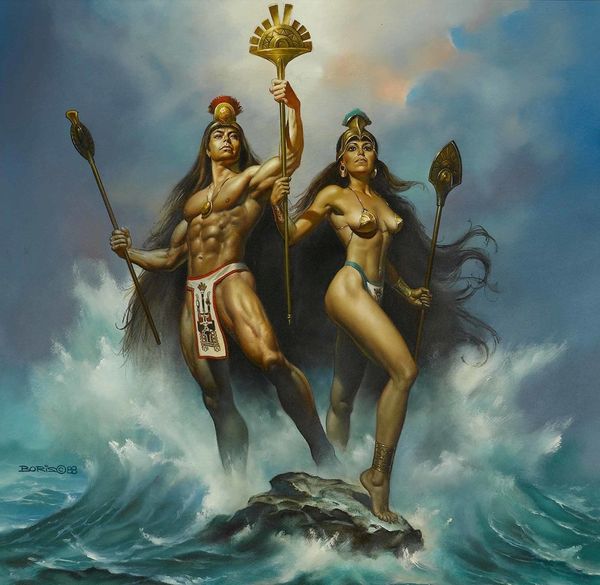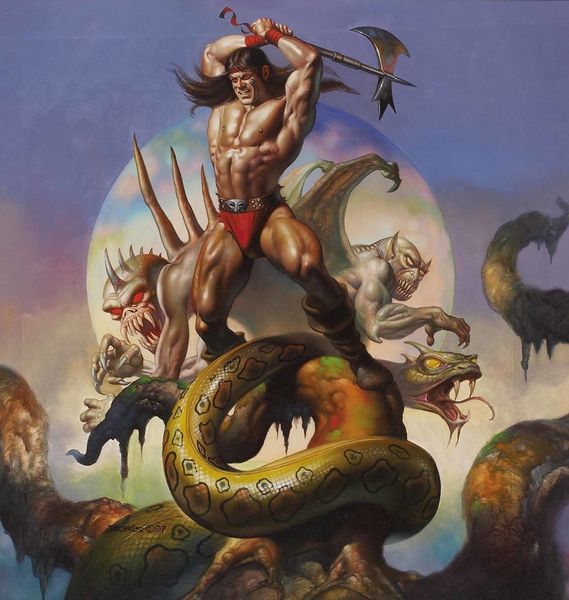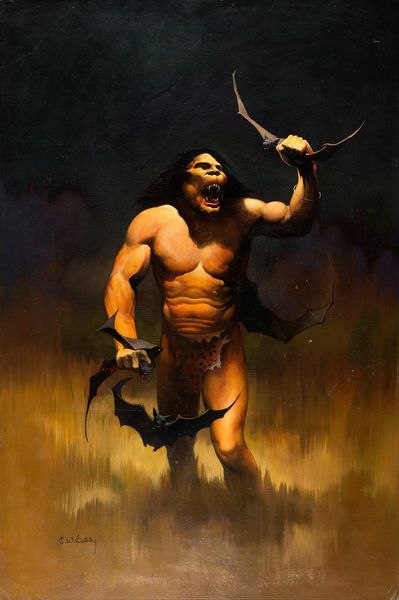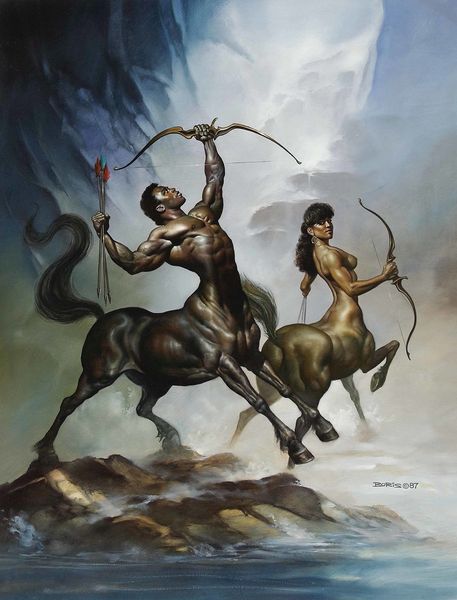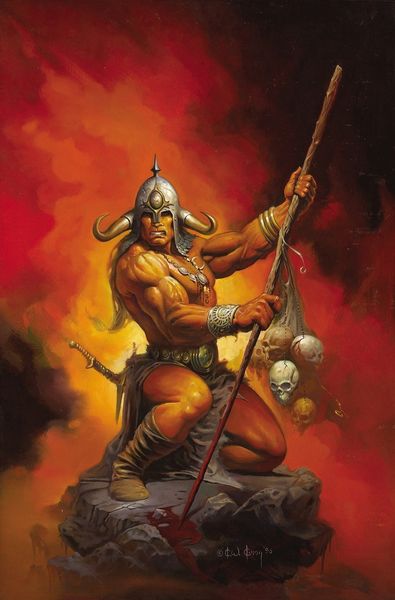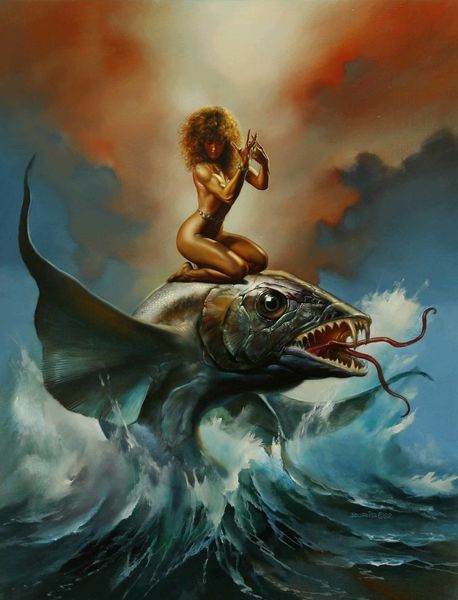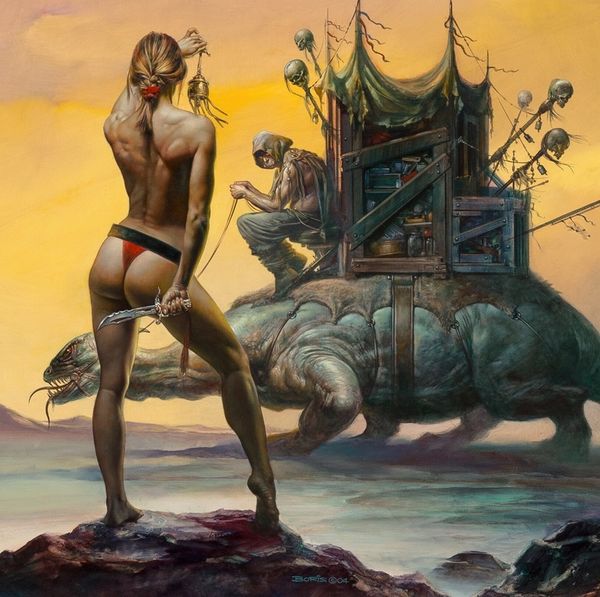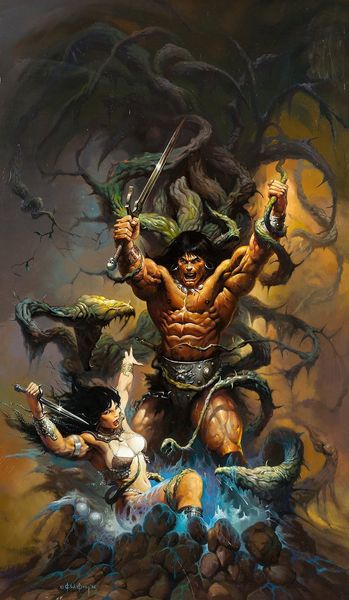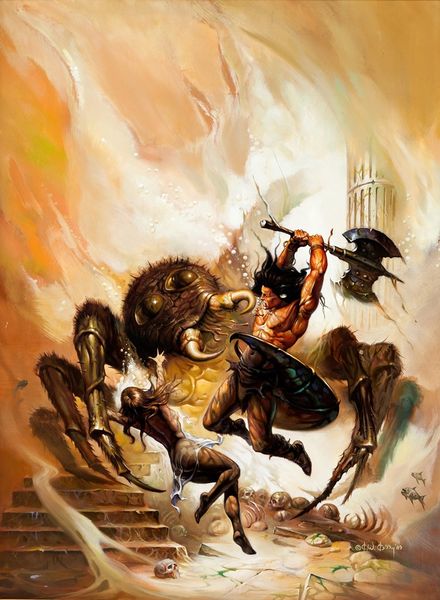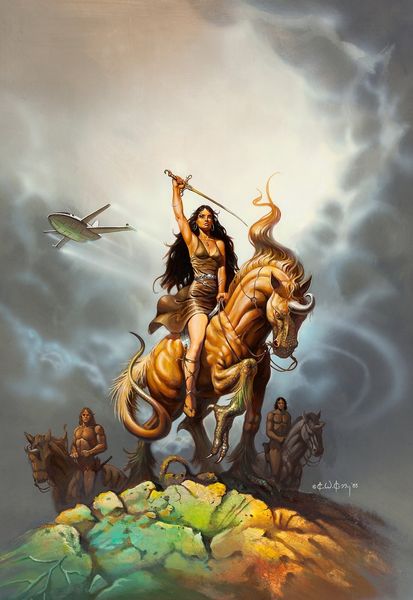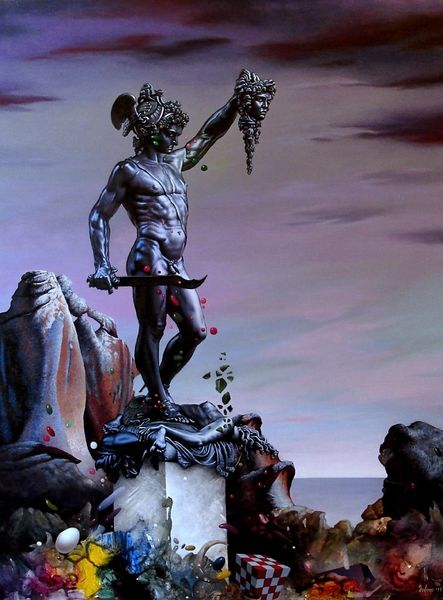
painting, oil-paint
#
fantasy art
#
painting
#
fantasy illustration
#
oil-paint
#
fantasy-art
#
figuration
#
academic-art
#
erotic-art
Copyright: Modern Artists: Artvee
Curator: Boris Vallejo's "Kalevanpojat," painted in 1992. A bold composition rendered with oil paints. What are your immediate impressions? Editor: My goodness, this oozes pulp fantasy! There’s such a blatant power dynamic happening here, and it’s impossible to ignore. Like, look at this huge, muscled… demon thing towering over a much smaller, scantily clad woman. The scales seem tilted from the outset. Curator: Indeed. Consider the strategic deployment of line and form. The exaggerated musculature of the larger figure, the precise rendering of texture – all serve to reinforce a hierarchical visual order. Vallejo meticulously constructs a visual language rooted in dominance and submission. Editor: Yeah, but does it have to be *this* obvious? It feels like he’s leaning way too heavily into tired tropes. It's like, give the woman some agency, some clothes, maybe? There is also so much shiny, smooth surfaces here that reflect an unworldly illumination. Curator: One might argue that the artist deliberately embraces these archetypes. Think of it as a study in established narratives, or, as semioticians say, the re-encoding of familiar signs. Consider the careful balance of the figures' postures—their contrasting sizes underscore specific messages related to fantasy, desire and authority. Editor: Oh, I get the "study" part. But doesn’t this visual language end up reinforcing potentially harmful ideals about gender and power? For me, what rescues it from the bin is the implied drama between them - there is something co-dependent between them and it’s all rather humorous once you realise it. Curator: From a purely formal perspective, the dynamic relationship between the figures generates a fascinating visual tension, regardless of its conceptual underpinning. However, I find it hard to appreciate any form of humorous reading of this artwork because of its stark seriousness. Editor: Sure, you're seeing the carefully planned structures, and I'm over here, swimming in the emotional deep end. Both, hopefully, give us food for thought about what art does, and what it reflects. Curator: Precisely. The dialogue between form and interpretation is fundamental to art appreciation. It opens multiple avenues for thoughtful analysis.
Comments
No comments
Be the first to comment and join the conversation on the ultimate creative platform.
